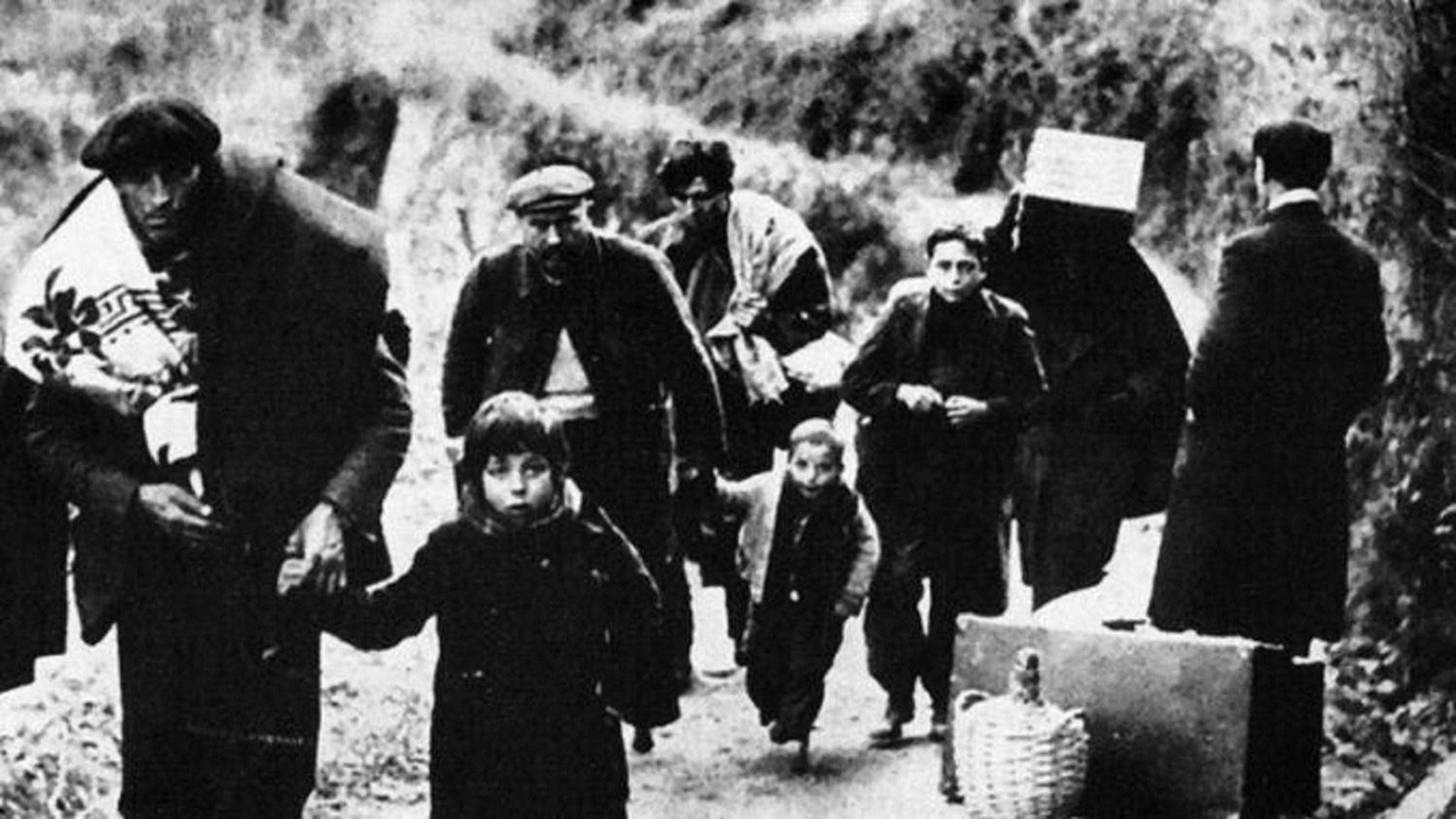Amadeo Gracia Bamala is the four year old boy who appears in the centre of the photograph, his young body already mutilated by inhumanity. He had lost a leg in a bombardment in 1937, during the Spanish Civil War. The youngest protagonist of this tragic wartime scene died on November 1st this year, as French newspaper L'Independant has reported.
The image, captured by Belgian photojournalist Hélène Roger-Viollet and published on February 18th, 1939 in L'Illustration, eventually became one of the most symbolic and shocking images of the tragedy of exile in the final weeks of Spain's three-year civil war. Amadeo appears in the photo with other members of his family, who like 475,000 others, crossed the border northwards in February 1939 to French territory, fleeing the final advance of Franco's troops. In the foreground is the father, Mariano Gracia, holding the hand of Amadeo's older sister, Alicia, who had also lost a leg. A few steps behind them is little Amadeo, and the oldest sibling, Antonio, the only one of the three who had escaped injury. The children's mother died in the bombing, which took place on November 20th, 1937 in their hometown of Monzón, Aragon.

Holding Amadeo's hand in the picture is Thomas Coll, a local of the Pyreneen town of Prats de Molló who helped the family cross the border in deplorable physical conditions and cold winter temperatures. The local man also had only one leg, having himself had a limb amputated in the First World War. When he heard that there was a family with a pair of one-legged children in a mountainside stable who didn't dare to descend the path to Prats de Molló, Tomás Coll decided to go and help them, according to the documentary Petit Amadeo, produced by TV3 and Parallel 40 and directed by Dani Feixas, Aymar Durlan and Guillem Lafoz. Together, the group traversed the Catalan border on foot from Camprodon, crossing the Coll d'Ares mountain pass and then descending to Prats de Molló.
Incredibly, the family's 1939 journey into exile in France was also captured in a few seconds of film footage, and those images are included in the Petit Amadeo documentary at 23m22s on the video below.
The three siblings were taken to a refuge at Caussade, in the Dordogne area of France, and according to the documentary, their father Mariano was also in the same area where he had requested work, but a year and a half later, his children were told he had died of an illness.
The children were later returned in a lice-infested wagon to Huesca - where they were born - and where their grandparents still lived. Antonio started working immediately, while Alicia and Amadeo spent twelve years in an orphanage, where they were humiliated and beaten, as children of the defeated Republicans. They endured hunger there as well. At the age of 18, Amadeo started work in the Azucarera Española sugar company, in whose employment he remained until his retirement, by then part of the company management in Madrid.
In 2003, El País Semanal published an article telling the story of the photograph, written by Amadeo Gracia Bamala himself, who by then lived in Alcalá de Henares, near Madrid. This interview was key in piecing together many unanswered questions that had always been raised by both his family and the descendants of Thomas Coll, in Prats de Molló. It then also transpired that a film camera had captured the moving images of Amadeo and his family arriving in France.
About 100,000 people of all ages crossed the border at Coll d'Ares, from Camprodon to Prats de Molló, between January 27th and February 17th, 1939, fleeing the horrors and hardships of the war. Most were women, children and the elderly, who crossed the mountain pass on foot, at an altitude of over 1,500 metres (5,000 feet). On the other side of the border, they were received by the two thousand inhabitants of Prats de Molló, who had organized themselves to receive the exiles with enormous solidarity.

